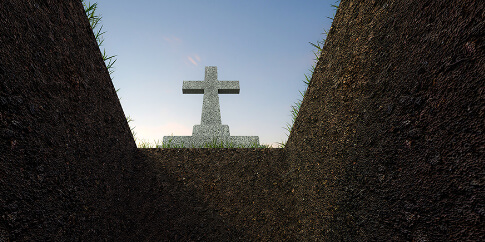The practice of burying the deceased 6 feet under has been a longstanding tradition in many cultures around the world. This standard burial depth has been ingrained in burial customs for centuries, but why is it so widely adopted? In this article, we explore the historical context and professional insights behind the 6-foot burial standard, shedding light on the factors that contribute to this enduring tradition.
-
Historical Origins:
The tradition of burying the dead 6 feet under has its roots in historical practices aimed at preventing the spread of diseases and protecting the living. During times of plagues and epidemics, burying bodies at a deeper depth was believed to limit the risk of contagion. While modern healthcare practices have significantly mitigated these concerns, the 6-foot standard has persisted as a symbolic and traditional measure.
-
Soil Decomposition Rates:
One key factor influencing burial depth is the rate of soil decomposition. Professional gravestone makers and memorial supplies experts often consider the natural decomposition processes of the human body when recommending burial depths. Studies have shown that at a depth of 6 feet, the soil conditions and microbial activity contribute to a more rapid decomposition, reducing the environmental impact and preserving the integrity of burial sites.
-
Legal Requirements:
In many regions, burial depth is regulated by local laws and cemetery regulations. Monument suppliers and memorial supplies professionals adhere to these legal requirements, ensuring that graves are dug to the specified depth. Legal frameworks may vary, but the 6-foot standard remains a common guideline in many jurisdictions as a practical and symbolic measure.
-
Conservation of Space:
With population growth and the increasing demand for burial space, the 6-foot burial standard has proven to be an efficient way to optimize land use in cemeteries. Graveyards and memorial parks are designed with this depth in mind to accommodate a higher density of burials while maintaining a respectful and organized layout. This standardization helps address the challenge of limited available land for burial purposes.
-
Symbolism and Tradition:
The 6-foot burial standard has also become deeply rooted in cultural and religious symbolism. While the specific reasons for this depth may vary across different traditions, the uniformity of the practice has created a shared cultural understanding of the appropriate depth for laying the deceased to rest.
The tradition of burying the dead 6 feet under is a multifaceted practice that intertwines historical, practical, and cultural considerations. From its origins as a protective measure against contagion to its role in optimizing burial space and adhering to legal regulations, the 6-foot burial standard remains a prominent and enduring aspect of burial customs. Gravestone makers, memorial supplies professionals, and monument suppliers continue to uphold this tradition while adapting to modern needs, ensuring that the final resting places of our loved ones are both respectful and sustainable.
Similar articles:
How do you make a grave for a dog?
What are the parts of a monument?
How are military graves marked?

